Macular Degeneration
Sydney Eye Surgeons ophthalmologists have extensive training and expertise in the diagnosis and management of macula degeneration.
Age-related macular degeneration (AMD) is an eye condition that affects a tiny part of the retina called the macula, which is located at the back of your eye. AMD causes problems with your central vision, but does not lead to total loss of sight and is not painful.
AMD affects the vision you use when you are looking directly at something, for example when you are reading, looking at photos or watching television. AMD may make this central vision distorted or blurry and, over a period of time, it may cause a blank patch in the centre of your vision.
You should have your eyes tested if:
- you notice any difficulty with reading small print with your reading glasses,
- straight lines start to look wavy or distorted
- your vision isn’t as clear as it used to be
What are the types of AMD?
There are two main types of AMD – “wet” AMD and “dry” AMD. They are called “wet” and “dry” because of what happens inside your eye and what the ophthalmologist sees when examining the inside of your eye, not because of how your eye feels or whether you have a watery or dry eye.
Dry AMD
Dry AMD is the more common type of AMD. It usually develops very slowly and causes a gradual change in your central vision. Dry AMD usually takes a long time, maybe a number of years to get to its final stage. At its worst, dry AMD causes a blank patch in the centre of your vision in both of your eyes. But it doesn’t affect your peripheral vision, so never leads to total blindness.
Wet AMD
About 10 –15 per cent of people who develop AMD have wet AMD. You develop wet AMD when the cells of the macula stop working correctly and the body starts growing new blood vessels to fix the problem.
Unfortunately these blood vessels grow in the wrong place and cause swelling and bleeding underneath the macula.
Wet AMD can develop very quickly, making serious changes to your central vision in a short period of time. Treatment is now available for wet AMD, which stops the new blood vessels from growing and damaging your macula. This treatment usually needs to be given quickly before the new blood vessels do too much damage to your macula. If the blood vessels are left to grow, the scarring and the sight loss it causes are usually permanent. Wet AMD doesn’t affect your peripheral vision, so it does not lead to total blindness.
Some people diagnosed with dry AMD find that, with time, new blood vessels grow and they develop wet AMD. If you have dry AMD and your sight suddenly changes you should always have this checked by your ophthalmologist.
What is an Amsler Grid?
The Amsler Grid is a screening test for macular degeneration.
1. Wear your glasses or contact lenses as usual.
2. View the screen so that the grid is at eye level.
3. Cover one eye and focus on the centre dot with the uncovered eye.
If the grid lines are wavy, broken or distorted or there are blurred or missing patches, this MAY be a symptom of macular degeneration.

Amsler Grid

How is AMD diagnosed?
Early signs of macular degeneration are usually detected during a routine retinal exam. If AMD is suspected, a graph called the Amsler grid is used to evaluate central vision and confirm vision loss. Depending on the findings Further diagnostic tests will be performed to determine the type of AMD and develop an effective treatment plan:
Optical coherence tomography (OCT)
OCT is advanced imaging technology that delivers cross sectional images of the retina at a much higher resolution
Fluorescein angiography exam
Fluorescein angiography involves injecting fluorescent dye into a vein in the arm, after which the dye travels to the blood vessels in the eye and illuminates the retina, thereby allowing high-quality images of the macula.
How is AMD treated?
Treating dry AMD
Treatment of dry AMD involves prevention of progression of disease. Although research is going on to try and find out why the cells of the macula stop working, this has not yet led to a treatment.
Preventing progression of AMD
- Do not smoke – studies have shown that AMD is more severe and progresses more rapidly in smokers.
- Eat deep sea fish rich in omega 3 regularly (up to 3 times per week).
- Have a diet that is rich in green leafy vegetables that contain lutein (such as spinach, curly kale and broccoli). Other healthy fruit and vegetables include ones with Vitamin C and zeaxanthin such as corn, papaya and capsicum.
- Anti-oxidants such as those found in blueberries, red kidney beans and green tea are thought to be beneficial.
- Limit saturated fats.
- There is some evidence that taking a dietary supplement may slow the progression of the disease
Treatments for wet AMD – Anti-VEGF treatment
A number of treatments are available for wet AMD. These mainly work by stopping the growth of new blood vessels. This means that treatments usually need to be given fairly quickly once the blood vessels start to grow in your eye. If the blood vessels are allowed to grow for too long they may scar the retina and this scarring cannot be treated.
The most recent treatment available for wet AMD is with an anti-vascular endothelial growth factor (anti-VEGF) drug. As new blood vessels form in your eye, your body produces a chemical that stimulates further new blood vessel growth. Anti-VEGF drugs interfere with these chemicals and stop the vessels from growing. By stopping blood vessels growing and leaking, further damage to your sight is prevented.
The medicine has to be injected into the vitreous, the gel-like substance inside your eye. This is called an intravitreal injection.
For more information on intravitreal injections, please click here
If you would like an assessment for macular degeneration, please call our rooms or make an online enquiry.
MIRANDA
Suite 1
20-24 Gibbs Street
Miranda NSW 2228
02 9525 5190
Fax: 02 9525 0202
Directions and parking
BONDI JUNCTION
Park Place
Suite 606b, Level 6
3 Waverley Street
Bondi Junction NSW 2022
02 9387 4427
Fax: 02 9388 0139
Directions and parking
HURSTVILLE
Suite 12, Level 2
33 MacMahon Street
Hurstville NSW 2220
02 9579 4004
Fax: 02 9570 1377
Directions and parking
HOURS
Monday to Friday
8:30am until 5:00pm
FOR PATIENTS
FOR REFERRERS
© 2017-2024 SYDNEY EYE SURGEONS














